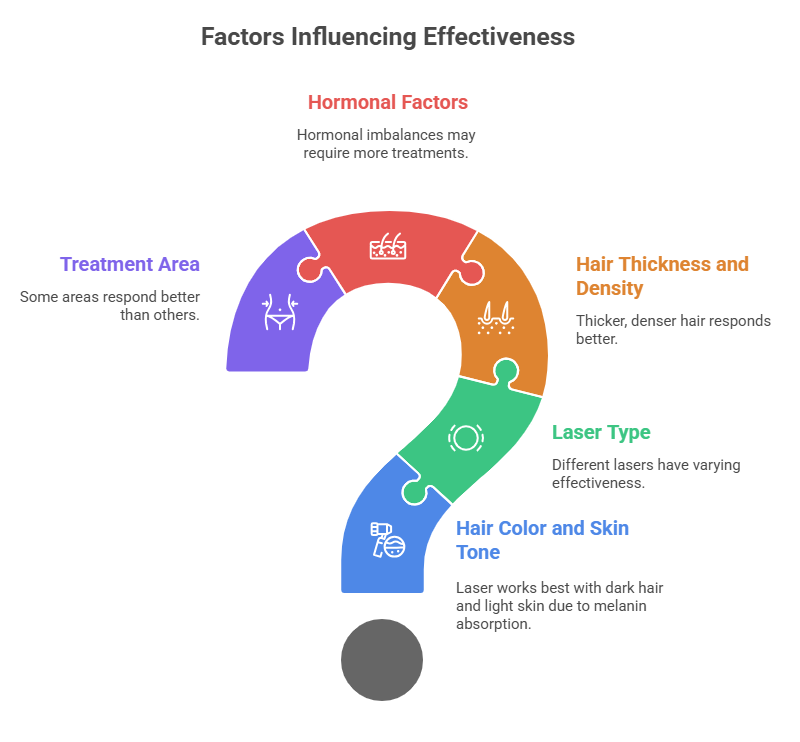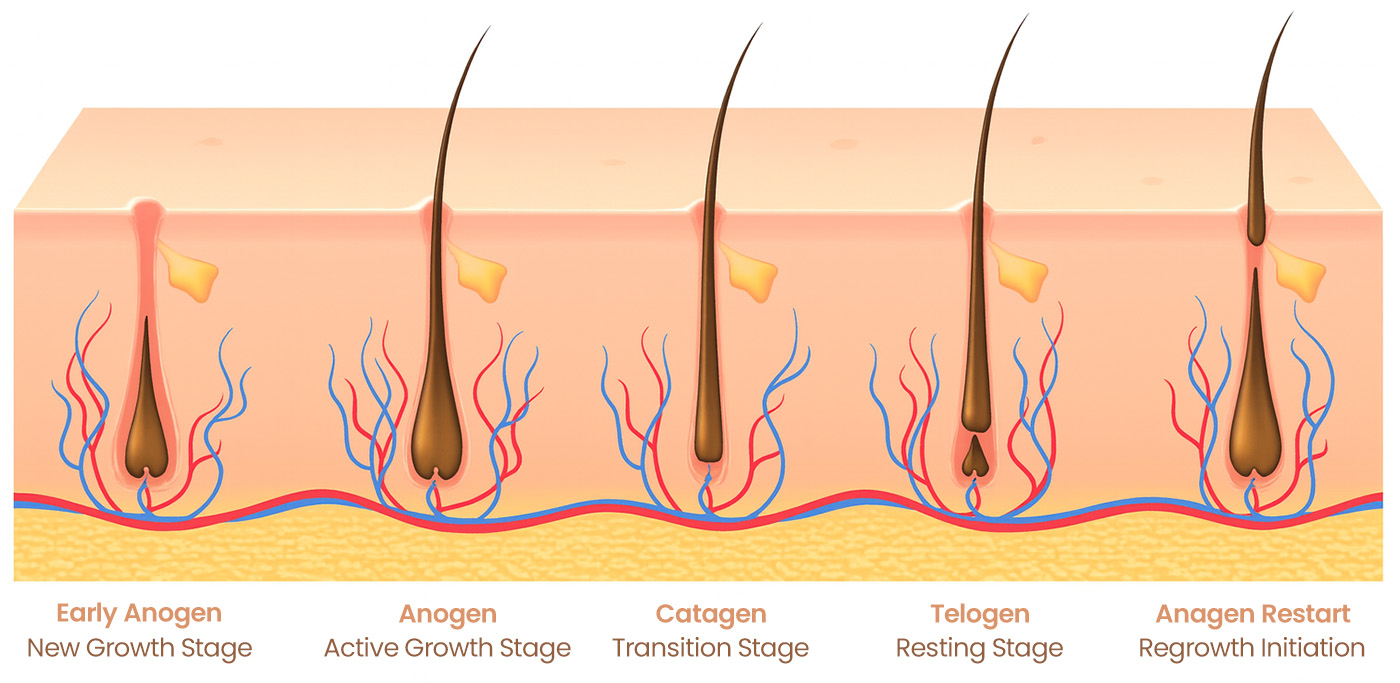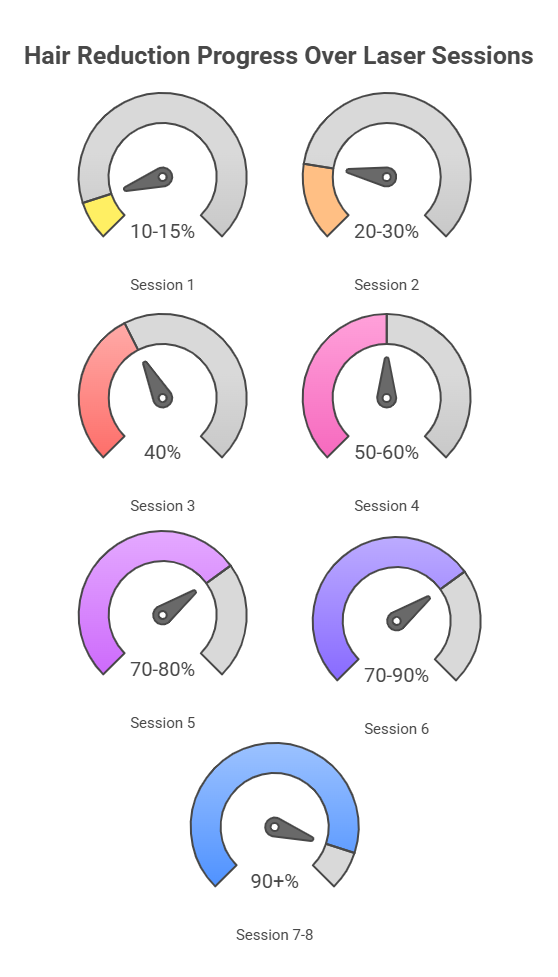Home hair gadgets look neat. Flash, glide, wait for the promised smoothness. Yet many users end up back with a razor a few months later. At home IPL can thin and slow regrowth, though it rarely matches the speed, coverage, or staying power of professional laser. If your goal is clearer skin with fewer top ups, a clinic course is the smarter route.
Table Of Content
- Does At Home Laser Hair Removal Work?
- 01. IPL versus laser, in plain English
- 02. Why at home results stall
- 03. Safety and skin tone
- 04. Speed and maintenance: the gap that matters
- 05. Why clinics using our systems get reliable clears
- 06. What clients usually see through a pro course
- 07. Still thinking of an at home route?
- 08. See it, test it, then decide
Does At Home Laser Hair Removal Work?
Yes, to a point. Most home handsets are IPL, which uses broad light that scatters through the skin. Professional laser uses a single wavelength that locks onto melanin inside the follicle with pinpoint accuracy. That difference sounds technical. On the body, it shows up as speed, precision, and consistency. The market reflects it too. Laser hair removal overtook injectables as the most popular UK aesthetic treatment in 2024, according to Rare Consulting.
01. IPL versus laser, in plain English
- Home IPL: Broad spectrum flashes, modest energy, small windows. Good for lighter skin with dark hair, yet it usually needs many sessions plus monthly maintenance.
- Clinic laser: Single wavelength light that targets melanin at depth, with larger spot sizes, measured fluence, and advanced cooling for comfort and safety.
Focused energy gets to the root, literally, and does the heavy lifting faster. For a deeper explainer, see IPL versus laser.
02. Why at home results stall
- Limited power: Safety caps are essential for home use, but they cap penetration on dense areas like legs and backs.
- Scatter not focus: IPL spreads energy into tissue that is not the target, so less heat reaches the growth cells.
- Hand technique drift: Angle, pressure, overlap, and speed vary between sessions, leaving patchy zones.
- Small windows: More time per area invites inconsistency. Repeat intervals tend to slip, which lets the cycle catch up.

03. Safety and skin tone
- Darker skin tones: IPL energy is absorbed readily by epidermal melanin, raising the risk of pigmentation changes. Clinics move to Nd:YAG for safer, deeper targeting on these tones. Our guide on laser for Afro‑Caribbean skin explains why wavelength choice is key.
- Cooling and oversight: Professional systems combine energy with powerful cooling and trained parameter control, which minimises adverse reactions.
England is introducing licensing for non surgical cosmetic procedures including laser hair removal, with requirements for training and insurance, set out on GOV.UK. Light based hair removal is best performed in a controlled environment, especially for deeper skin tones and sensitive areas.
04. Speed and maintenance: the gap that matters
| Criteria | Home IPL | Clinic three in one laser |
|---|---|---|
| First visible change | Three to six sessions | Two to four sessions |
| Course length | Eight to twelve, plus monthly top ups | Six to eight for strong reduction |
| Skin tones covered | Limited on deeper tones | All types with Nd:YAG |
| Consistency | User dependent | Measured and repeatable |
| Comfort | Basic contact plates | Advanced cooling |
| Outcome style | Thinner regrowth, patch risk | Durable reduction |
Course spacing matters. Multiple sources, including the Mayo Clinic, advise a programme across months due to the hair growth cycle. Clinics hit that rhythm precisely, which shortens the journey and reduces maintenance.
05. Why clinics using our systems get reliable clears
- Three wavelengths in one: 755 Alexandrite for lighter skin and finer hair, 808 Diode for broad versatility, 1064 Nd:YAG for deeper skin and coarse roots. One console suits Fitzpatrick I to VI.
- Comfort first design: Integrated cooling and high pulse rates deliver quick, calm sessions.
- Smarter control: Handpiece adjustment, built in analysers on selected models, and clear interfaces reduce the learning curve.
- Support that keeps diaries full: Free training and certification, plus a rapid swap promise if a unit cannot be repaired promptly. No long downtime, no missed revenue.
Compare the Nu TriLaze Plus, the Nu TriLaze Lite, and the Nu eRays Plus, or view all laser hair removal machines.
06. What clients usually see through a pro course
Expect light shedding after the first visit, softer regrowth by session three, then visible clearance building toward session six to eight. Mild redness and a little swelling can appear for a day or two and usually resolve quickly, which mirrors widely reported effects in clinical summaries.


07. Still thinking of an at home route?
- Choose home only if: You have lighter skin with dark hair, tiny areas to cover, and the patience for strict, ongoing maintenance.
- Choose clinic if: You want faster change, even coverage, suitability for all skin tones, and less faff with upkeep.
If you want smooth skin that stays that way, professional laser is the reliable choice. UK demand keeps rising as technology improves targeting and comfort, as noted by Future Market Insights.
08. See it, test it, then decide
- Book a hands on demo: Visit our Coventry showroom or ask for a live video tour. Book a demo.
- Talk finance and packages: Get clear numbers on costs and returns, plus training and certification details. Request details and finance.
- Stay compliant: Many clinics appoint an LPA and supervisor. Our Laser Protection Adviser service keeps policies and safety tight.
Want more context for clients and teams? Read about laser safety by skin type, effectiveness expectations, and treatment costs.
Dr Majid Zarandouz
Majid holds a PhD in organic chemistry and has been working with laser systems for decades. His career began in the mid-1990s, when he started researching and developing laser-based technologies for medical and cosmetic applications. Over the years, he has combined scientific expertise with practical engineering to design machines that are effective, durable, and straightforward to use in real clinic settings. As director of the British Institute of Lasers, Majid continues to focus on producing equipment that meets professional standards while remaining accessible to businesses of all sizes.

